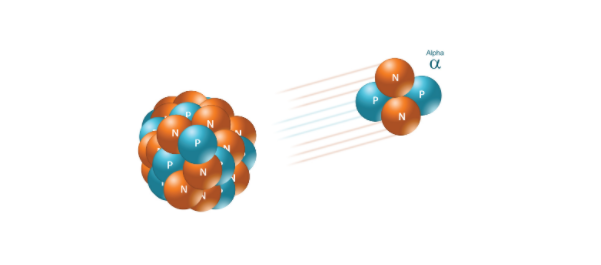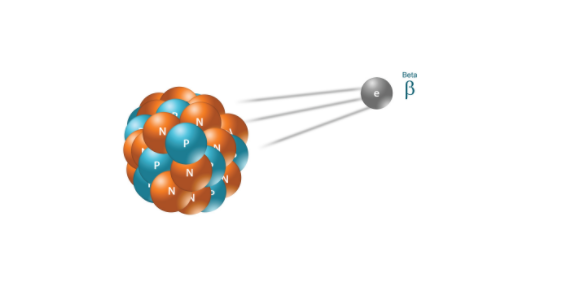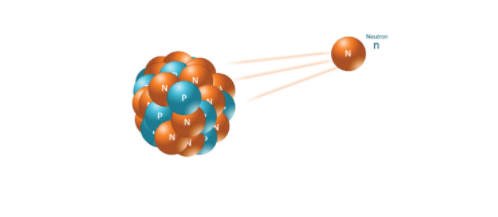Proton, neutron, α, β, γ, X-ray [with exercise questions]

Overview
Ionizing radiation is radiation, traveling as a particle or electromagnetic wave, that carries sufficient energy to detach electrons from atoms or molecules, thereby ionizing an atom or a molecule. Ionizing radiation is made up of energetic subatomic particles, ions or atoms moving at high speed, and electromagnetic waves on the high-energy spectrum.
Ionizing radiation takes a few forms: Alpha, beta, and neutron particles, and gamma and X-rays. All types are caused by unstable atoms, which have an excess of energy or mass. In order to reach a stable state, thery must release that extra energy or mass in the form of radiation.
Alpha Radiation
Alpha radiation occurs when an atom undergoes radioactive decay, ejecting a particle, which essentially is the nucleus of a helium-4 atom and called as an alpha particle. Due to their charge and mass, alpha particles interact strongly with matter. Alpha particles are unable to penetrate the outer layer of dead skin cells, but are capable, if an alpha emitting substance is ingested in food or air, of causing serious cell damage.

Beta Radiation
Beta radiation takes the form of either an electron or a positron (a particle with the size and mass of an electron, but with a positive charge) being emitted from an atom. Due to the smaller mass, it is able to travel further in air, up to a few meters, and can be stopped by a thick piece of plastic, or even a stack of paper. It can penetrate skin a few centimeters, posing somewhat of an external health risk.

Gamma Radiation
Gamma radiation, unlike alpha or beta, does not consist of any particles, instead consisting of a photon of energy being emitted from an unstable nucleus. Having no mass or charge, gamma radiation can travel much farther through air than alpha or beta, losing (on average) half its energy for every 500 feet.

X-rays
X-rays are similar to gamma radiation, with the primary difference being that they originate from the electron cloud. This is generally caused by energy changes in an electron, such as moving from a higher energy level to a lower one, causing the excess energy to be released. X-Rays are longer-wavelength and lower energy than gamma radiation.

Neutron Radiation
Lastly, Neutron radiation consists of a free neutron, usually emitted as a result of nuclear fission. Able to travel hundreds or even thousands of meters in air, but they are able to be effectively stopped if blocked by a hydrogen-rich material, such as concrete or water. Not typically able to ionize an atom directly due to their lack of a charge, neutrons most commonly are indirectly ionizing, in that they are absorbed into a stable atom, thereby making it unstable and more likely to emit off ionizing radiation of another type. Neutrons are the only type of radiation that is able to turn other materials radioactive.

This page has been viewed times.